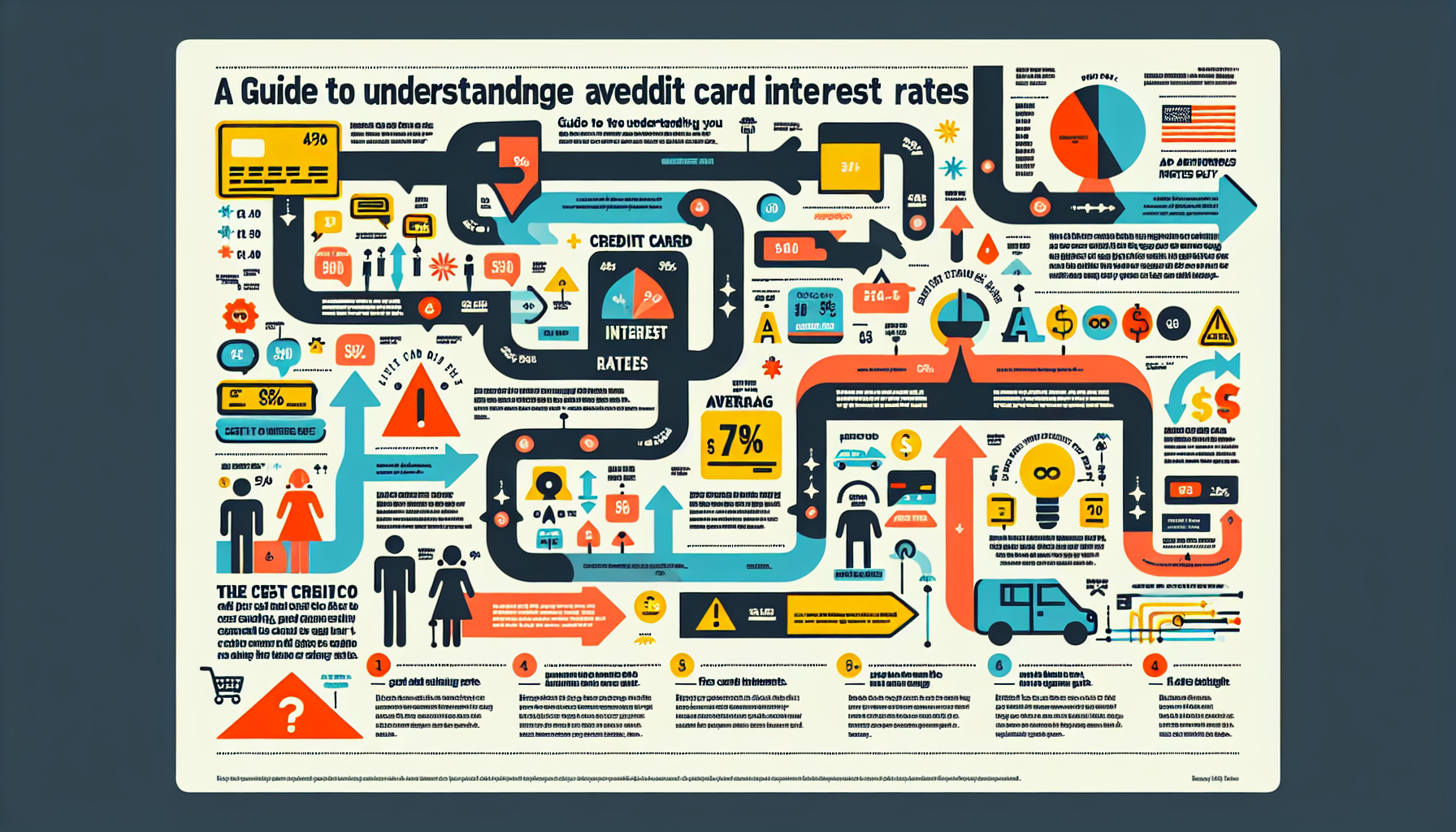Credit cards can be powerful financial tools, providing convenience, rewards, and a line of credit that helps manage expenses. However, the interest rates associated with these cards can significantly impact your finances if not managed properly. This guide aims to help you understand current credit card interest rates and offers tips for managing and reducing the associated financial burden effectively.
Understanding Today’s Credit Card Interest Rates
In the complex world of personal finance, understanding credit card interest rates is crucial for managing debt and keeping financial health in check. Interest rates on credit cards, often referred to as Annual Percentage Rates (APRs), can vary widely depending on several factors. These factors include the type of credit card, your credit score, and the prevailing economic conditions. As of recent years, average APRs range from around 15% to over 25%, with reward cards and subprime credit cards typically carrying higher rates.
Credit card companies determine the APR based on the prime rate, which is influenced by the Federal Reserve’s monetary policy. When the Federal Reserve adjusts interest rates, it directly affects the prime rate and, consequently, the APRs on credit cards. In times of economic stability and low inflation, interest rates tend to be lower. Conversely, periods of economic uncertainty or high inflation can lead to higher rates. This dynamic makes it essential for consumers to stay informed about market trends and Federal Reserve announcements.
Additionally, understanding the different types of APRs on credit cards can help you manage your finances better. For instance, many cards offer introductory 0% APR periods on purchases or balance transfers. These promotional offers can be beneficial if used wisely but come with fine print and terms that must be understood thoroughly. After the introductory period, the rate typically reverts to the standard APR, which can be significantly higher. Therefore, it’s important to be aware of when these periods end and what the standard rate will be.
Tips for Managing and Reducing Your Interest Burden
The first step in managing your credit card interest burden is to pay more than the minimum payment each month. Minimum payments are usually designed to cover interest and a small portion of the principal, meaning that only paying the minimum will prolong your debt and increase the total interest paid over time. By paying a larger amount, you can reduce the principal faster and, consequently, the amount of interest accrued.
Another effective strategy is to take advantage of balance transfer offers. Many credit cards offer promotional 0% APR on balance transfers for a specified period, usually between 12 to 18 months. By transferring high-interest debt to a card with a 0% APR, you can save a significant amount on interest. However, it’s crucial to note any balance transfer fees and ensure that you can pay off the balance before the promotional period ends to avoid reverting to a higher interest rate.
Improving your credit score can also lead to lower interest rates. Credit card companies use your credit score to determine the risk of lending to you, and a higher score typically results in lower APRs. To boost your credit score, focus on paying off existing debts, making payments on time, and reducing your overall credit utilization ratio. Regularly monitoring your credit report for errors and rectifying them can also improve your score. Over time, these actions can lead to offers of lower interest rates on new or existing credit cards.
Navigating the landscape of credit card interest rates can seem daunting, but with a solid understanding and strategic management, you can minimize your financial burden. By staying informed about current rates, making more than the minimum payments, utilizing balance transfer offers, and improving your credit score, you can take control of your finances and reduce the impact of high-interest rates. Remember, the key to managing credit effectively lies in informed and proactive financial behavior.
